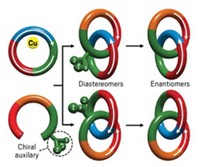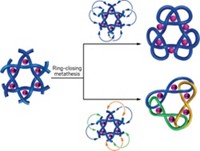Advertisement
Grab your lab coat. Let's get started
Welcome!
Welcome!
Create an account below to get 6 C&EN articles per month, receive newsletters and more - all free.
It seems this is your first time logging in online. Please enter the following information to continue.
As an ACS member you automatically get access to this site. All we need is few more details to create your reading experience.
Not you? Sign in with a different account.
Not you? Sign in with a different account.
ERROR 1
ERROR 1
ERROR 2
ERROR 2
ERROR 2
ERROR 2
ERROR 2
Password and Confirm password must match.
If you have an ACS member number, please enter it here so we can link this account to your membership. (optional)
ERROR 2
ACS values your privacy. By submitting your information, you are gaining access to C&EN and subscribing to our weekly newsletter. We use the information you provide to make your reading experience better, and we will never sell your data to third party members.
Catalysis
Mechanical chirality gives new shape to catalysis
Mechanically chiral rotaxane creates a catalytic pocket a little like an enzyme
by Laura Howes
March 15, 2020
| A version of this story appeared in
Volume 98, Issue 10

Researchers in the UK have used a mechanically planar chiral rotaxane as the basis for an enantioselective gold catalyst (Chem 2020, DOI: 10.1016/j.chempr.2020.02.006). Stephen Goldup and Andrew Heard at the University of Southampton say their work is a proof of concept that mechanical bonds can be used to build “pockets” for selective synthesis akin to those found in enzymes. Heard started by building and separating two mechanically chiral rotaxanes. Rotaxanes are mechanically interlocked molecules in which a macrocycle is threaded onto a dumbbell-shaped compound or axle. Heard’s chiral rotaxanes differ from one another by the direction that the macrocyles loop around the central axles. By adding gold to a phosphine ligand at one end of the axle, Heard created chiral catalysts for a cyclopropanation reaction (shown). Each catalyst gave a different enantiomeric product and worked about as well as current catalysts. However, Goldup doesn’t expect that synthetic chemists will be using his new catalyst just yet—not least because these chiral rotaxanes are hard to make and isolate. The team now hopes to show that chiral rotaxanes can help build enantioselective catalysts that are currently impossible to create otherwise—opening up new vistas of synthetic chemistry would make it well worth dealing with the fussy rotaxanes.





Join the conversation
Contact the reporter
Submit a Letter to the Editor for publication
Engage with us on Twitter